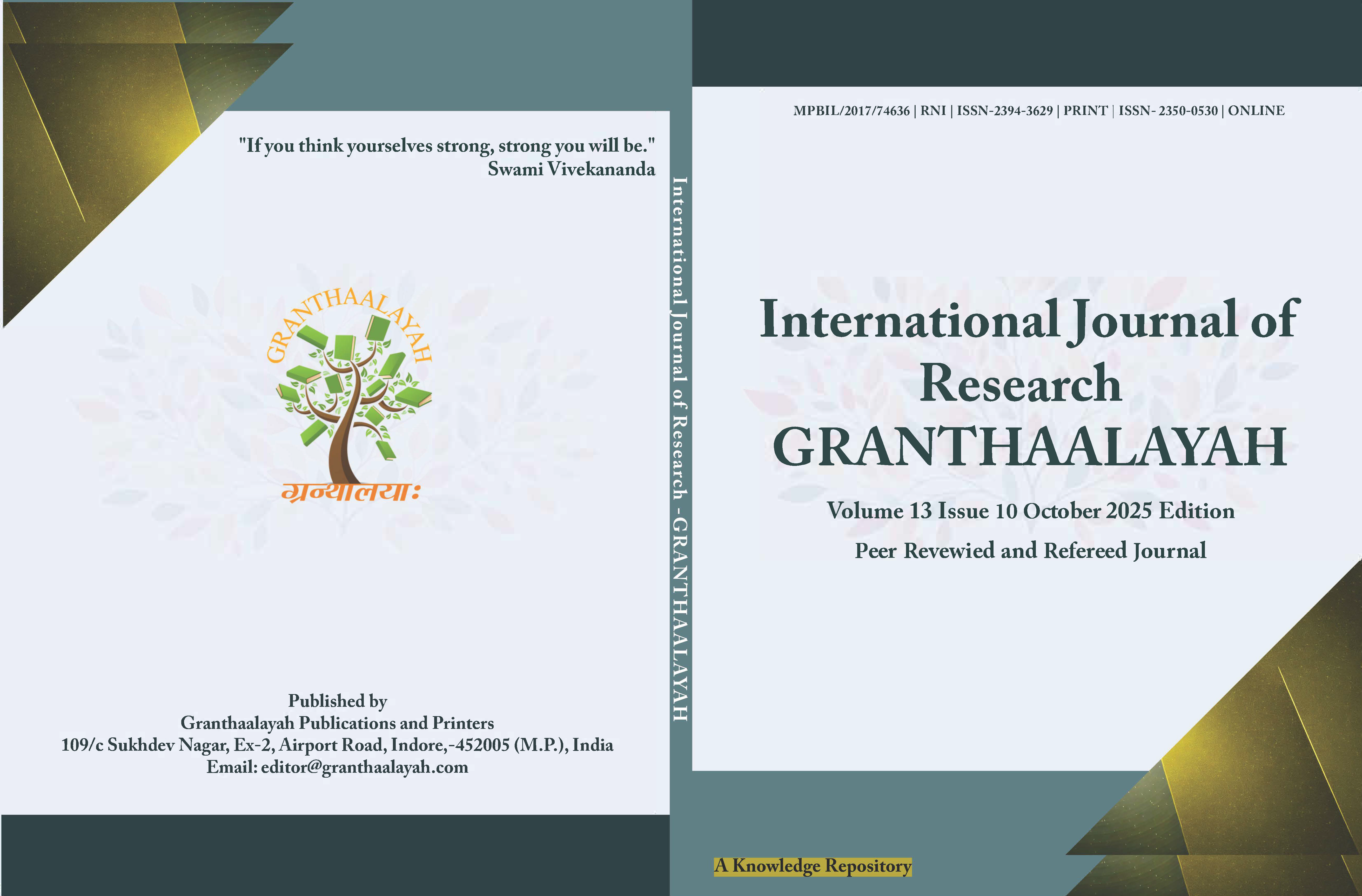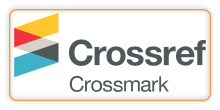MULTIDIMENSIONAL PHYTOPHARMACOLOGICAL EVALUATION OF THE GENUS SYMPLOCOS (SYMPLOCACEAE): A REVIEW
DOI:
https://doi.org/10.29121/granthaalayah.v13.i10.2025.6388Keywords:
Medicinal Plants, Phytochemistry, Pharmacognosy, Phytochemical Constituents, Pharmacology, Ethnobotany, Phytomedicine, TherapeuticAbstract [English]
The Symplocos genus, comprising more than 300 species of flowering plants, has garnered significant attention in both traditional and modern medicine. This genus, commonly found in tropical and subtropical regions, has a rich history of use in traditional medicinal systems worldwide. Extracts from these plants have been employed to treat various ailments, including digestive disorders, diabetes, cancer and respiratory issues. In the realm of modern medicine, Symplocos species have undergone extensive phytochemical analysis. However, to date there is no collective information on the pharmacognostical and pharmacological significance of this genus together. Hence, this review article aims to highlight the phytochemical, ethnobotanical, pharmacognostical, pharmacological and molecular aspects that have been studied in the Symplocos genus for a deeper understanding of recent literature relating to phytochemical and pharmacological attributes of various Symplocos species. Researchers have tapped various bioactive entities, including alkaloids, flavonoids, and terpenoids, which contribute to their therapeutic properties. These phytochemical investigations have laid the foundation for further exploration of Symplocos-derived compounds as potential pharmaceutical agents. Pharmacognostical studies in this genus have explored the further characterisation and standardisation of Symplocos extracts, ensuring their quality and safety in medicinal applications. Additionally, pharmacological investigations have provided valuable insights into the mechanism of action of these extracts, revealing their potential in treating various diseases. Notably, Symplocos extracts have displayed anti-inflammatory, anticancer, antimicrobial and antioxidant activities, and gene expression studies have shed light on the molecular mechanism underlying the pharmacological effects of Symplocos compounds. This review article emphasises the importance of the Symplocos genus, which holds great medicinal potential, with studies confirming its diverse bioactive compounds and therapeutic properties. The pharmacological and molecular investigations on this genus have provided valuable insights into its mechanisms of action. Continued research in this field holds greater promise of unveiling novel therapeutic agents and expanding novel exposure of their mechanism of action in the discovery of novel drug leads.
Downloads
References
Abbasi, M. A., Ahmad, V. U., Zubair, M., Fatima, N., Farooq, U., Hussain, S., & Choudhary, M. I. (2004). Phosphodiesterase and Thymidine Phosphorylase-Inhibiting Salirepin Derivatives from Symplocos racemosa. Planta Medica, 70(12), 1189–1194. https://doi.org/10.1055/s-2004-835850 DOI: https://doi.org/10.1055/s-2004-835850
Abida, P., De Britto, A. J., Antoney, J., & Raj, T. L. S. (2016). Evaluation of in Vitro Anticancer Activity of Symplocos Cochinchinensis (Lour.) S. Moore bark. International Journal of Herbal Medicine, 4(6), 117–119.
Acebey-Castellon, I. L., Voutquenne-Nazabadioko, L., Doan Thi Mai, H., Roseau, N., Bouthagane, N., Muhammad, D., & Lavaud, C. (2011). Triterpenoid saponins from Symplocos Lancifolia. Journal of Natural Products, 74(2), 163–168. https://doi.org/10.1021/np100502y DOI: https://doi.org/10.1021/np100502y
Acharya, N., Acharya, S., Shah, U., Shah, R., & Hingorani, L. (2016). A Comprehensive Analysis on Symplocos Racemosa Roxb.: Traditional Uses, Botany, Phytochemistry And Pharmacological Activities. Journal of Ethnopharmacology, 181, 236–251. https://doi.org/10.1016/j.jep.2016.01.043 DOI: https://doi.org/10.1016/j.jep.2016.01.043
Ahmad, V. U., Abbasi, M. A., Hussain, H., Akhtar, M. N., Farooq, U., Fatima, N., & Choudhary, M. I. (2003). Phenolic Glycosides from Symplocos Racemosa: Natural Inhibitors of Phosphodiesterase I. Phytochemistry, 63(2), 217–220. https://doi.org/10.1016/S0031-9422%2803%2900075-X DOI: https://doi.org/10.1016/S0031-9422(03)00075-X
Ahmad, V. U., Rashid, M. A., Abbasi, M. A., Rasool, N., & Zubair, M. (2007). New Salirepin Derivatives from Symplocos Racemosa. Journal of Asian Natural Products Research, 9(3), 209–215. https://doi.org/10.1080/10286020500531993 DOI: https://doi.org/10.1080/10286020500531993
Antu, K. A. (2014). Investigation on Key Molecular Targets Responsible for Antidiabetic Properties of Symplocos Cochinchinensis (Lour.) S. Moore (Doctoral dissertation, Cochin University of Science and Technology).
Antu, K. A., Riya, M. P., Mishra, A., Anilkumar, K. S., Chandrakanth, C. K., Tamrakar, A. K., & Raghu, K. G. (2014). Antidiabetic Property of Symplocos Cochinchinensis is Mediated by Inhibition of Α-Glucosidase and Enhanced Insulin Sensitivity. PLoS ONE, 9(9), e105829. https://doi.org/10.1371/journal.pone.0105829 DOI: https://doi.org/10.1371/journal.pone.0105829
Antu, K. A., Riya, M. P., Nair, A., Mishra, A., Srivastava, A. K., & Raghu, K. G. (2016). Symplocos cochinchinensis Enhances Insulin Sensitivity Via the Down-Regulation of Lipogenesis and Insulin Resistance in High Energy Diet Rat Model. Journal of Ethnopharmacology, 193, 500–509. https://doi.org/10.1016/j.jep.2016.09.050 DOI: https://doi.org/10.1016/j.jep.2016.09.050
Badoni, R., Semwal, D. K., Kothiyal, S. K., & Rawat, U. (2010). Chemical Constituents and Biological Applications of the Genus Symplocos. Journal of Asian Natural Products Research, 12(12), 1069–1080. https://doi.org/10.1080/10286020.2010.532789 DOI: https://doi.org/10.1080/10286020.2010.532789
Bhutani, K. K., Jadhav, A. N., & Kalia, V. (2004). Effect of Symplocos racemosa Roxb. on Gonadotropin Release in Immature Female Rats and Ovarian Histology. Journal of Ethnopharmacology, 94(1), 197–200. https://doi.org/10.1016/j.jep.2004.04.022 DOI: https://doi.org/10.1016/j.jep.2004.04.022
Bhuvan, R. P., Jignesh, P. D., Bhavik, P. A., & Ashok, G. L. (2009). Potent in Vitro Anticancer Activity of Symplocos racemosa bark. Journal of Biological Plant Biology, 54(2), 135–140.
Choudhary, M. I., Fatima, N., Abbasi, M. A., Jalil, S., & Ahmad, V. U. (2004). Phenolic Glycosides, a New Class of Human Recombinant Nucleotide Pyrophosphatase Phosphodiesterase-1 Inhibitors. Bioorganic & Medicinal Chemistry, 12(22), 5793–5798. https://doi.org/10.1016/j.bmc.2004.08.035 DOI: https://doi.org/10.1016/j.bmc.2004.08.035
Devmurari, V. P. (2010). Antibacterial evaluation and phytochemical screening of Symplocos Racemosa Roxb. International Journal of PharmTech Research, 2(2), 1359–1363.
Dhande, P. P., Simpy, R., Kureshee, N. I., Sanghavi, D. R., & Pandit, V. A. (2012). Burn Wound Healing Potential of Jatyadi Formulations in Rats. Research Journal of Pharmaceutical, Biological and Chemical Sciences, 3(4), 747–754.
Dhaon, R., Jain, G. K., Sarin, J. P., & Khanna, N. M. (1990). Symposide: A New Antifibrinolytic Glycoside from Symplocos Racemosa Roxb. ChemInform, 21(9). https://doi.org/10.1002/chin.199009331 DOI: https://doi.org/10.1002/chin.199009331
Frotan, M. H., Acharya, S. B., Frotan, R., Pathak, N. K. R., & Biswas, M. (1983). Pharmacological Investigations on Spinasterol Isolated from Symplocos Spicata. Indian Journal of Pharmacology, 15(3), 197.
Govindarajan, N., Cheekala, U. M. R., Arcot, S., Sundaramoorthy, S., Shanmugam, M., Duraisamy, R., & Raju, I. (2016). Comparative Powder Microscopic and HPTLC Studies on Stem Barks of Symplocos Racemosa Roxb. and Symplocos crataegoides Ham. Pharmacognosy Journal, 8(4). https://doi.org/10.5530/pj.2016.4.7 DOI: https://doi.org/10.5530/pj.2016.4.7
Higuchi, R., Kawasaki, T., Biswas, M., Pandey, V. B., & Dasgupta, B. (1982). Triterpenoid Saponins from the Stem Bark of Symplocos spicata. Phytochemistry, 21(4), 907–910. https://doi.org/10.1016/0031-9422%2882%2980091-5 DOI: https://doi.org/10.1016/0031-9422(82)80091-5
Huang, C.-I., Chang, H.-S., Lin, C.-H., & Chen, I.-S. (2016). Terpene Alkaloid Glucosides and Apocarotenoids from Symplocos anomala. Chemistry of Natural Compounds, 52, 560–563. https://doi.org/10.1007/s10600-016-1710-8 DOI: https://doi.org/10.1007/s10600-016-1710-8
Huo, C., Liang, H., Zhao, Y., Wang, B., & Zhang, Q. (2008). Neolignan Glycosides from Symplocos Caudata. Phytochemistry, 69(3), 788–795. https://doi.org/10.1016/j.phytochem.2007.08.022 DOI: https://doi.org/10.1016/j.phytochem.2007.08.022
Huo, C., Shen, L.-R., Zhao, Y.-Y., & Liang, H. (2007). Chemical Constituents of Plants from the Genus Symplocos. Chemistry & Biodiversity, 4(1), 1–11. https://doi.org/10.1002/cbdv.200790013 DOI: https://doi.org/10.1002/cbdv.200790013
Huong, T. T., Minh, T. T., Van Thong, N., Dang, N. H., & Dat, N. T. (2017). Investigation of Anti-Inflammatory Lignans from the Leaves of Symplocos Sumuntia Buch-Ham ex D. Don (Symplocaceae). Tropical Journal of Pharmaceutical Research, 16(9), 2191–2196. https://doi.org/10.4314/tjpr.v16i9.21 DOI: https://doi.org/10.4314/tjpr.v16i9.21
Hussain, R. A., Lin, Y.-M., Poveda, L. J., Bordas, E., Chung, B. S., Pezzuto, J. M., & Kinghorn, A. D. (1990). Plant-Derived Sweetening Agents: Saccharide and Polyol Constituents of Some Sweet-Tasting Plants. Journal of Ethnopharmacology, 28(1), 103–115. https://doi.org/10.1016/0378-8741%2890%2990067-4 DOI: https://doi.org/10.1016/0378-8741(90)90067-4
Hyder, Z., Rizwani, G. H., Zahid, H., Shareef, H., Ishaq, S., & Khan, M. (2017). Commonly used Medicinal Herbs in Pakistan—A Pharmacognostic Appraisal. Hakim Mohammed Said, 60(4), 56.
Iida, J., Hayashi, M., Murata, T., Ono, M., Inoue, K., & Fujita, T. (1990). Identification of a New Minor Iridoid Glycoside in Symplocos Glauca by Thermospray LC–MS. Journal of Chromatography A, 515, 503–508. https://doi.org/10.1016/S0021-9673%2801%2989346-8 DOI: https://doi.org/10.1016/S0021-9673(01)89346-8
Ishida, J., Wang, H.-K., Oyama, M., Cosentino, M. L., Hu, C.-Q., & Lee, K.-H. (2001). Anti-AIDS agents: Anti-HIV Activity of Harman, and Anti-HIV Principle from Symplocos Setchuensis, and its Derivatives. Journal of Natural Products, 64(7), 958–960. https://doi.org/10.1021/np0101189 DOI: https://doi.org/10.1021/np0101189
Aiyar, K. N., Namboodiri, A. N. & Kolammal, M. (1975). Pharmacognosy of Ayurvedic Drugs (Kerala). The Central Research Institute, University of Travancore.
Kambhoja, S., & Keshava, M. K. (2004). Phytochemical and Pharmacological Studies on Bark of Symplocos racemosa.
Khan, M. R., Kihara, M., & Omoloso, A. D. (2001). Antimicrobial Activity of Symplocos Cochinensis. Fitoterapia, 72(7), 825–828. https://doi.org/10.1016/S0367-326X%2801%2900314-8 DOI: https://doi.org/10.1016/S0367-326X(01)00314-8
Kim, Y., Min, H. Y., Park, E. J., Lee, Y. S., Jin, C., & Lee, S. K. (2003). Evaluation of the Antioxidant Potential of Korean Indigenous Plant Extracts by Free Radical Scavenging Activity. Natural Product Sciences, 9(2), 80–82.
Krishna, C. G., Divya, M., Ramya, K., Dolly, S., & Kumar, K. P. (2013). Pharmacological Evaluation of Symplocos Racemosa Bark Extracts on Experimentally Induced Ulceritis in Rat Model. Elixir Pharmacy, 55, 12964–12966.
Kusuma, G., Vijaya Kumar, B., & Chitra, S. (2018). Symplocos Paniculata Miq. —A Review. International Journal of Current Research in Biosciences and Plant Biology, 3, 7–20. https://doi.org/10.20546/ijcrbp.2018.503.002 DOI: https://doi.org/10.20546/ijcrbp.2018.503.002
Lakshmi, K. S., & Vadivu, R. (2010). The Anti-Snake Venom Activity of the Leaves of Symplocos Cochinchinensis (Lour.) S. Moore ssp. laurina (Symplocaceae). Der Pharmacia Lettre, 2(4), 77–81.
Lee, B.-W., Ha, T. K. Q., Pham, H. T. T., Hoang, Q. H., Tran, V. O., & Oh, W. K. (2019). Hydroxyoleoside-Type Seco-Iridoids from Symplocos Cochinchinensis and Their Insulin Mimetic Activity. Scientific Reports, 9, 2270. https://doi.org/10.1038/s41598-018-38013-4 DOI: https://doi.org/10.1038/s41598-018-38013-4
Li, B., Abliz, Z., Tang, M., Fu, G., & Yu, S. (2006). Rapid Structural Characterization of Triterpenoid Saponins in Crude Extract from Symplocos Chinensis using LC–ESI–MS/MS. Journal of Chromatography A, 1101(1–2), 53–62. https://doi.org/10.1016/j.chroma.2005.09.058 DOI: https://doi.org/10.1016/j.chroma.2005.09.058
Li, X.-H., Shen, D.-D., Li, N., & Yu, S.-S. (2003). Bioactive Triterpenoids from Symplocos Chinensis. Journal of Asian Natural Products Research, 5(1), 49–56. https://doi.org/10.1080/1028602031000080469 DOI: https://doi.org/10.1080/1028602031000080469
Li, Y., & Loake, G. J. (2016). Redox-Regulated Plant Transcription Factors. In Plant Transcription Factors (pp. 373–384). Academic Press. https://doi.org/10.1016/B978-0-12-800854-6.00024-5 DOI: https://doi.org/10.1016/B978-0-12-800854-6.00024-5
Lim, J. S., Bae, J., Lee, S., Lee, D. Y., Yao, L., Cho, N., & Cho, Y. C. (2022). In Vitro Anti-Inflammatory Effects of Symplocos Sumuntia Buch.-Ham. ex D. Don Extract via Blockage of the NF-κB/JNK Signaling Pathways in LPS-Activated Microglial cells. Plants, 11(22), 3095. https://doi.org/10.3390/plants11223095 DOI: https://doi.org/10.3390/plants11223095
Lin, L.-C., Tsai, W.-J., & Chou, C.-J. (1996). Studies on the Constituents of Symplocos Lancifolia. Chinese Pharmaceutical Journal, 48, 441–449.
Ling, T.-J., Lin, L.-D., Wu, P., Zhou, W.-H., Ye, H.-G., Liu, M.-F., & Wei, X.-Y. (2004). Dihydrochalcones from Symplocos Vacciniifolia. Chinese Chemical Letters, 15(10), 1182–1184.
Ly, H. T., & Le, V. K. (2021). Preliminary Phytochemical Analysis and the Anti-Diabetic Effect of leaf extracts of Symplocos Cochinchinensis (Lour.) Moore ssp. laurina (Retz.) Nooteboom Against α-Amylase and α-Glucosidase. Science & Technology Asia, 174–187.
Ly, H. T., Le, V. K. T., Phan, C. S., Vo, C. T., Nguyen, M. L., & Phan, T. A. D. (2022). Phytochemical Analysis and Correlation of Total Polyphenol Content and Antioxidant Properties of Symplocos Cochinchinensis Leaves. Vietnam Journal of Science, Technology and Engineering, 64(1), 43–48. https://doi.org/10.31276/VJSTE.64%281%29.43-48 DOI: https://doi.org/10.31276/VJSTE.64(1).43-48
Miura, H., Kitamura, Y., & Sugii, M. (1985). Isolation, Determination, and Synthesis of Confusoside, a Minor Dihydrochalcone Glycoside from Symplocos Microcalyx Hay. Journal of Pharmacognosy (Japan), 39(4), 312–315.
Na, M.-K., Yang, S., He, L, Oh, H., Kim, B. S., Oh, W. K., & Ahn, J. S. (2006). Inhibition of Protein Tyrosine Phosphatase 1B by Ursane-Type Triterpenes Isolated from Symplocos Paniculata. Planta Medica, 72(3), 261–263. https://doi.org/10.1055/s-2005-873194 DOI: https://doi.org/10.1055/s-2005-873194
Perdew, G. H., Vanden Heuvel, J. P., & Peters, J. M. (Eds.). (2006). Regulation of Gene Expression: Molecular Mechanisms. Humana Press. https://doi.org/10.1007/978-1-59745-228-1 DOI: https://doi.org/10.1007/978-1-59745-228-1
Rajeshkumar, R., & Dhanabal, S. P. (2020). Alteration of Mitochondrial Gene Expression in Cervical Cancer Cells by Induction of Oxidative Stress. Current Trends in Biotechnology and Pharmacy, 1–9.
Semwal, R. B., Semwal, D. K., Semwal, R., Singh, R., & Rawat, M. S. M. (2011). Chemical Constituents from the Stem Bark of Symplocos Paniculata Thunb. with Antimicrobial, Analgesic and Anti-Inflammatory Activities. Journal of Ethnopharmacology, 135(1), 78–87. https://doi.org/10.1016/j.jep.2011.02.021 DOI: https://doi.org/10.1016/j.jep.2011.02.021
Seong, S. H., Kim, B. R., Park, J. S., Jeong, D. Y., Kim, T. S., Im, S., & Cho, M. L. (2023). Phytochemical Profiling of Symplocos Tanakana Nakai and S. sawafutagi Nagam. Leaf and Identification of their Antioxidant and Anti-Diabetic Potential. Journal of Pharmaceutical and Biomedical Analysis, 233, 115441. https://doi.org/10.1016/j.jpba.2023.115441 DOI: https://doi.org/10.1016/j.jpba.2023.115441
Shailajan, S., Menon, S., Pednekar, S., & Singh, A. (2011). Wound Healing Efficacy of Jatyadi Taila: In Vivo Evaluation in Rat Using Excision Wound Model. Journal of Ethnopharmacology, 138(1), 99–104. https://doi.org/10.1016/j.jep.2011.08.050 DOI: https://doi.org/10.1016/j.jep.2011.08.050
Sharma, B. D., et al. (1993). Flora of India. Botanical Survey of India.
Sharma, S. K., Sharma, S. M., Saini, V. P., & Mohapatra, S. (2013). Evaluation of Analgesic and Anti-Inflammatory Activity of Symplocos Racemosa. International Research Journal of Pharmacy, 4(2), 136–139. https://doi.org/10.7897/2230-8407.04350 DOI: https://doi.org/10.7897/2230-8407.04350
Shrestha, K. K., Paudel, Y. N., Manandhar, K. D., Ghimire, G. P., Choi, S., & Shrestha, S. (2017). Bio-Prospecting of Plant Resources for Validation of Indigenous Knowledge and the Search for Novel Herbal Drugs in Nepal. Knowing Our Lands and Resources, 13, 156.
Sunil, C., & Ignacimuthu, S. (2011). In Vitro and in Vivo Antioxidant Activity of Symplocos Cochinchinensis S. Moore Leaves Containing Phenolic Compounds. Food and Chemical Toxicology, 49(7), 1604–1609. https://doi.org/10.1016/j.fct.2011.04.010 DOI: https://doi.org/10.1016/j.fct.2011.04.010
Sunil, C., Ignacimuthu, S., & Agastian, P. (2011). Antidiabetic Effect of Symplocos Cochinchinensis (Lour.) S. Moore in type 2 Diabetic Rats. Journal of Ethnopharmacology, 134(2), 298–304. https://doi.org/10.1016/j.jep.2010.12.018 DOI: https://doi.org/10.1016/j.jep.2010.12.018
Tanaka, T., Kawamura, K., Kohda, H., Yamasaki, K., & Tanaka, O. (1982). Glycosides of the Leaves of Symplocos spp. (Symplocaceae). Chemical and Pharmaceutical Bulletin, 30(7), 2421–2423. https://doi.org/10.1248/cpb.30.2421 DOI: https://doi.org/10.1248/cpb.30.2421
Tang, M., Shen, D., Hu, Y., Gao, S., & Yu, S. (2004). Cytotoxic Triterpenoid Saponins from Symplocos Chinensis. Journal of Natural Products, 67(12), 1969–1974. https://doi.org/10.1021/np040013g DOI: https://doi.org/10.1021/np040013g
Tiwari, R. D., & Tripathi, H. L. (1976). A New Flavonol Glycoside from the Leaves of Symplocos Spicata. Phytochemistry, 15(5), 833. https://doi.org/10.1016/S0031-9422%2800%2994471-6 DOI: https://doi.org/10.1016/S0031-9422(00)94471-6
Tschesche, R., Braun, T. M., & Sassen, W. V. (1980). Symplocoside, a Flavanol Glycoside from Symplocos Uniflora. Phytochemistry, 19(8), 1825–1829. https://doi.org/10.1016/S0031-9422%2800%2983821-2 DOI: https://doi.org/10.1016/S0031-9422(00)83821-2
Vadivu, R., & Lakshmi, K. S. (2008). In Vitro and in Vivo Anti-Inflammatory Activity of Leaves of Symplocos Cochinchinensis (Lour.) Moore ssp. laurina. Bangladesh Journal of Pharmacology, 3(2), 121–124. https://doi.org/10.3329/bjp.v3i2.956 DOI: https://doi.org/10.3329/bjp.v3i2.956
Venkidesh, R., Pal, D., Kumar, C. K., Saravanakumar, A., & Mandal, S. C. (2011). Hepatoprotective Activity of Symplocos Racemosa Roxb. Bark Extract in Carbon Tetrachloride-Induced Liver Damage in Rats. International Journal of Innovative Pharmaceutical Research, 2(3), 147–150. DOI: https://doi.org/10.4103/0975-9476.85552
Venkidesh, R., Pal, D., Kumar, C. K., Saravanakumar, A., & Mandal, S. C. (2012). Studies on Anti-Diabetic Potential of Symplocos racemosa Roxb. Bark Extract in Streptozotocin-Induced Diabetic Rats. International Journal of Phytopharmacology Research, 3(1), 1–5.
Vijayabaskaran, M., Babu, G., Venkateswaramurthy, N., Yuvaraja, K. R., Sivakumar, P., & Jayakar, B. (2010). In Vitro Antioxidant Potential of Ethanolic Bark Extract of Symplocos Racemosa Roxb. International Journal of Pharm Tech, 2(3), 320–328.
Vijayabaskaran, M., Yuvaraja, K. R., Babu, G., Sivakumar, P., Perumal, P., & Jayakar, B. (2010). Hepatoprotective and Antioxidant Activity of Symplocos Racemosa bark Extract on DMBA-Induced Hepatocellular Carcinoma in Rats. International Journal of Current Trends in Science & Technology, 1(3), 147–158.
Vijayabaskaran, M. A., Babu, G., Venkateswaramurthy, N., Chitra, A., & Perumal, P. (2010). Evaluation of Antipyretic Activity of Ethanolic Extract of Symplocos Racemosa Roxb. International Journal of Bio-Applied Pharmaceutical Sciences, 1, 21–24.
Waffo-Téguo, P., Voutquenne, L., Thoison, O., Dumontet, V., & Lavaud, C. (2004). Acetylated Glucuronide Triterpene Bidesmosidic Saponins from Symplocos Glomerata. Phytochemistry, 65(6), 741–750. https://doi.org/10.1016/j.phytochem.2004.01.012 DOI: https://doi.org/10.1016/j.phytochem.2004.01.012
Wang, K.-W., & Yan, S.-N. (2018). Chemical constituents of Symplocos setchuensis. Chemistry of Natural Compounds, 54, 1012–1014. https://doi.org/10.1007/s10600-018-2538-1 DOI: https://doi.org/10.1007/s10600-018-2538-1
Wang, Y., Fritsch, P. W., Shi, S., Almeda, F., Cruz, B. C., & Kelly, L. M. (2004). Phylogeny and Infrageneric Classification of Symplocos (Symplocaceae) Inferred from DNA Sequence Data. American Journal of Botany, 91(11), 1901–1914. https://doi.org/10.3732/ajb.91.11.1901 DOI: https://doi.org/10.3732/ajb.91.11.1901
Watt, G. (1972). Dictionary of the Economic Products of India. Periodical Expert Book Agency.
Wu, Y.-F., & Nooteboom, H. P. (1996). Symplocaceae Desfontaines. In Flora of China.
Published
How to Cite
Issue
Section
License
Copyright (c) 2025 J. Malavika, K. Thenmozhi

This work is licensed under a Creative Commons Attribution 4.0 International License.
With the licence CC-BY, authors retain the copyright, allowing anyone to download, reuse, re-print, modify, distribute, and/or copy their contribution. The work must be properly attributed to its author.
It is not necessary to ask for further permission from the author or journal board.
This journal provides immediate open access to its content on the principle that making research freely available to the public supports a greater global exchange of knowledge.






























